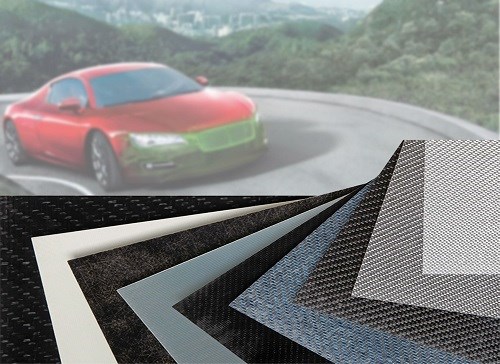New Group Gets Continuous-Fiber-Reinforced Composites Ready
New team to support partners though all stages of Tepex component development.
New team to support partners though all stages of Tepex component development.
Since Lanxess (U.S. office in Pittsburgh) acquired Bond-Laminates four years ago, the company has been ‘nurturing’ and further expanding the Tepex range of continuous-fiber-reinforced thermoplastic semi-finished composites for lightweight construction of automotive components.
And, the company is now further zeroing in on the automotive industry through the formation of a project group that is geared to its needs and support of partners through all stages of Tepex component development right up to production launch. Moreover, by K 2016 in October, the company will have published a brochure on Tepex processing.
It comes as no surprise to us—this increasing thirst for thermoplastic composites in automotive and beyond—as we witnessed full attendance, at each of the 22 presentations of our second “Thermoplastic Composites Conference for Automotive” (TCC Auto2016) which covered topics in Applications & Materials and Machinery & Processes. It took place just last month in Novi, Mich., occurring concurrently with the show and conference, and presented by Plastics Technology magazine and , sister publications within .
So, Lanxess’s new group—Tepex Automotive Technical Marketing & Business Development—essentially brings together the expertise of Lanxess and its subsidiary Bond-Laminates in materials, processes, and the selection of suitable components for automotive lightweight construction with Tepex. This team will act as an interface between CAD concepts, component/process design and simulation, the mold makers and the equipment manufacturers for processing and handling Tepex.
“Our expertise and services are available locally all over the world thanks to the global network of regional product and application development centers that Lanxess has established. We can therefore assist international development partners at all their locations, with everything from first application idea to starting up large-scale production.” Said Martin Klocke, head of the group in the High Performance Materials (HPM) 大象传媒 unit.
Comprehensive processing information on Tepex and the way it works is also underway. Lanxess will showcase this processing guide and K 2016. It will provide information on the advantages of the thermoplastic composite, its potential in lightweight construction and the product families, and will cover in detail the many methods for processing Tepex—such as thermoforming and hybrid molding.
Extensive sections will address techniques for heating Tepex as well as the design and calculation of components for draping and integrative simulation. It will include recommendations on mold design and how to handle hot Tepex inserts. A final section will offer tips on finishing, joining and recycling Tepex components. The brochure is both directed at engineers as well as readers interested in the technology who work, for instance, in marketing or purchasing.
The range of applications where Tepex is being applied has broadened significantly. Initially, it was used to locally reinforce plastic areas in front-ends. By now, it is used to manufacture seat shells, back seats, back rests, brake pedals, battery carriers, infotainment brackets and underbody panels. Just recently, the world’s first, hybrid-molded rear bumper beam went into production for the Honda’s new Clarity Fuel Cell car.
Moreover, the product range continues to expand as we have been reporting since the acquisition. The latest example is multiaxial Tepex, designed to enhance the mechanical performance of components, because the orientation of the reinforcing fiber layers can be adapted to the flow of forces in a component and thus to stress scenarios, according to Klocke. This new structural material is production-ready and will soon be introduced to the market in the first application.

Related Content
Impacts of Auto’s Switch to Sustainability
Of all the trends you can see at NPE2024, this one is BIG. Not only is the auto industry transitioning to electrification but there are concerted efforts to modify the materials used, especially polymers, for interior applications.
Read MoreINEOS Styrolution to Close ABS Production in Addyston, Ohio
Company will commence a safe and responsible decommissioning process in the second quarter of 2025.
Read MoreIndustrial Resin Recycling Diversifies by Looking Beyond Automotive
Recycler equips for new 大象传媒 in medical, housewares and carpeting.
Read MoreGlass Fiber-Reinforced PP With PCR For Automotive
Borcycle GD3600SY will appear in Peugeot vehicles.
Read MoreRead Next
Lead the Conversation, Change the Conversation
Coverage of single-use plastics can be both misleading and demoralizing. Here are 10 tips for changing the perception of the plastics industry at your company and in your community.
Read MoreBeyond Prototypes: 8 Ways the Plastics Industry Is Using 3D Printing
Plastics processors are finding applications for 3D printing around the plant and across the supply chain. Here are 8 examples to look for at NPE2024.
Read MoreFor PLASTICS' CEO Seaholm, NPE to Shine Light on Sustainability Successes
With advocacy, communication and sustainability as three main pillars, Seaholm leads a trade association to NPE that ‘is more active today than we have ever been.’
Read More















